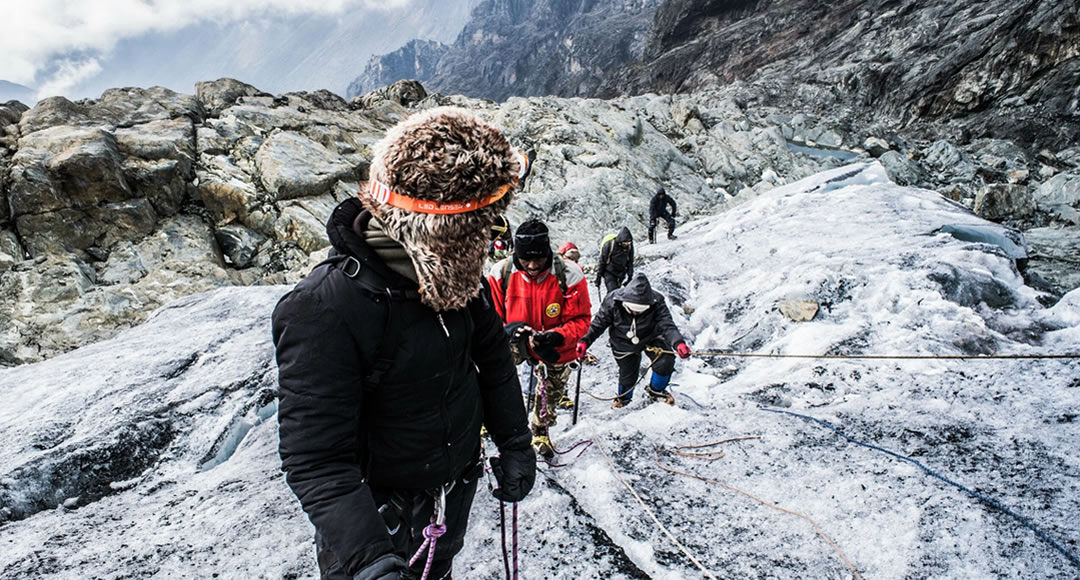
10 Things to Know About Rwenzori Mountains
Nestled in the heart of Africa, the Rwenzori Mountains stand as a towering testament to nature’s unparalleled beauty and allure as they are legendary known as the “Mountains of the Moon.” The magical mountain ranges are located on the border between Uganda and the Democratic Republic of Congo (DRC) in East Africa. The mountains host the 3rd highest summit – Margherita on Mount Stanley on the African continent after Kilimanjaro of Tanzania and Mount Kenya. Trekking the mystic Rwenzori mountains is one of the unique experiences that one should not miss. The wonder of the high glaciers and beauty of the valley of nine lakes, are some of the things that will motivate you to trek the Rwenzori Mountains.
Protected by a UNESCO World Heritage Site –the Rwenzori mountains national park, there are several key points one should be knowing and take note about the glaciated mountains of the moon and among these include;
Geography and Location
The Rwenzori Mountains stretch for about 120 kilometres (75 miles) along the border between Uganda and the DRC. They are part of the Albertine Rift, which is the western branch of the East African Rift System. They are protected by Rwenzori Mountains National Park which covers an area of approximately 1,000 square kilometers in the south-western part of Uganda in the districts of Bundibugyo, Kabarole, and Kasese.
Highest Peak
The highest peak in the Rwenzori Mountains is Margherita Peak on Mount Stanley, one of the massifs of the Rwenzori ranges. The peak stretches at a height of 5,109 meters above sea level and it known as the highest in Uganda and Democratic Republic of Congo and then the third highest mountain in Africa after Mount Kilimanjaro and Mount Kenya.
Mountaineering
Hosting the third highest peak of Africa – Margherita, Rwenzori Mountains offer excellent opportunities for mountaineering and trekking experiences. The most popular trekking route is the “Central Circuit,” which takes trekkers through various ecosystems and landscapes, from lush rain forests to alpine moorland and snow-covered peaks.
Glacial Environment
The Rwenzori Mountains are unique for their glacial environment near the equator. They are home to several glaciers and snowfields, although these have been receding due to climate change. The glaciers are an important water source for local communities and ecosystems.
Biodiversity
The Rwenzori Mountains are recognized for their high biodiversity, including many species of plants, animals, and birds that are endemic to the region. The mountains feature 54 Albertine rift endemics that include 18 mammal species, 21 birds, 9 reptiles and 6 amphibian species. The area was designated a UNESCO World Heritage Site in 1994 for its exceptional natural value.
Cultural Significance
Rwenzori Mountains are known for their beautiful and unique cultural significance for local communities, particularly the Bakonjo people who inhabit the slopes of the mountains. The mountains have been woven into their myths, legends, and daily lives for generations. As you travel to the mountains, have some good time with the locals as they entertain you through dances, songs and drama playing.
Challenges
Trekking to the summit of the Rwenzori Mountains can be physically demanding due to the steep terrain, unpredictable weather, and high elevation. Adequate preparation, including acclimatization, is essential for a safe and enjoyable trekking experience.
Conservation Efforts
Conservation organizations and governments have been working to protect the unique biodiversity of the Rwenzori Mountains and address the impacts of climate change on the glacial environment. Efforts are also made to ensure that tourism and trekking activities are sustainable and do not harm the fragile ecosystems.
Access
The main entry point for exploring the Rwenzori Mountains from the Ugandan side is the town of Kasese. Trekkers usually start their journey from the base camp at Nyakalengijja when hiking through the route of the central circuit – the most common and easiest trail.
Weather
The weather in the Rwenzori Mountains can be unpredictable and can change rapidly. Rainfall is common throughout the year, and trekkers should be prepared for wet and muddy conditions.
Overall, the Rwenzori Mountains are a remarkable natural and cultural treasure, offering a unique blend of biodiversity, glacial landscapes, and cultural heritage for those who venture into their heights.
Read More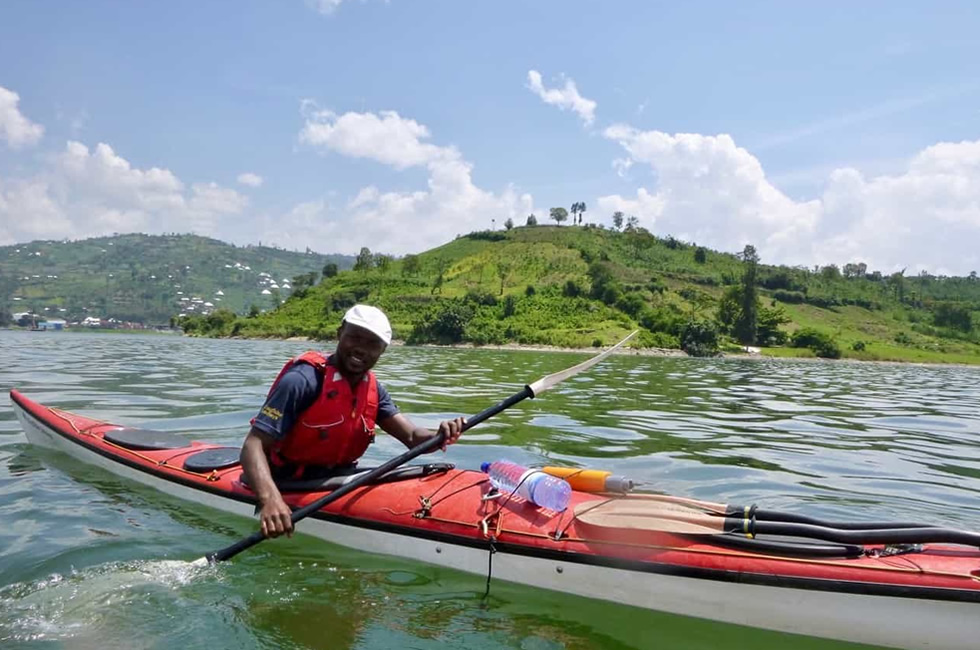
Canoeing Experience in Rwanda
Are you planning your safari to the African continent but still wondering on where to have the best stress-free experience? With a number of water bodies in different areas, the Republic of Rwanda has got you covered with the best canoeing experience. The country has a total surface area of 26,338 square kilometers with over 10 water bodies like lake Kivu, River Akagera, Lake Ihema, and many others that are safe and best for canoeing. Among the places/water bodies where the experience takes place include the following;
Lake Kivu
Lying on the border between the Democratic Republic of Congo and Rwanda, Lake Kivu is one of Africa’s Great Lakes and a stunning location for canoeing. The lake offers a serene and peaceful setting with beautiful views of the surrounding hills and volcanoes. Canoeing on Lake Kivu allows you to explore its shores, visit small islands, and witness local fishing activities. It’s an excellent opportunity for birdwatching and taking in the natural beauty of Rwanda’s western region.
Canoeing in Akagera National Park
Located in the eastern part of Rwanda, Akagera is Rwanda’s largest national park stretching at an area of approximately 1,122 square kilometers and is known for its diverse wildlife. The park has several lakes and waterways where canoeing is done and among these include Lake Ihema, Lake Shakani, Lake Gishanju, Lake Mihindi and Lake Rwanyakazinga. Canoe safaris in Akagera provide a unique perspective to observe hippos, crocodiles, and various waterbirds up close, as they are often found near the water’s edge. It’s a peaceful and intimate way to experience the park’s abundant aquatic life and landscapes.
Whether you are a beginner or an experienced canoeist, there are options for guided canoe trips tailored to your skill level and interests. There are different rangers who will help you prepare and get used to the calm waters as you enjoy the activity.
Apart from canoeing experience, there are several other activities done on Rwanda safari and among these include; gorilla trekking and golden monkey tracking in Volcanoes national park, Chimpanzee trekking in Nyungwe forest national park, nature walks and hiking, city tours in the beautiful and clean Kigali, wildlife watching in Akagera national park, bird watching, and many others. For the best and safe encounters, book with an authorized and registered tour operator like Primate Safari Experiences limited which designs the best and affordable tour packages in countries like Rwanda, Uganda, Congo, Kenya and Tanzania.
Read More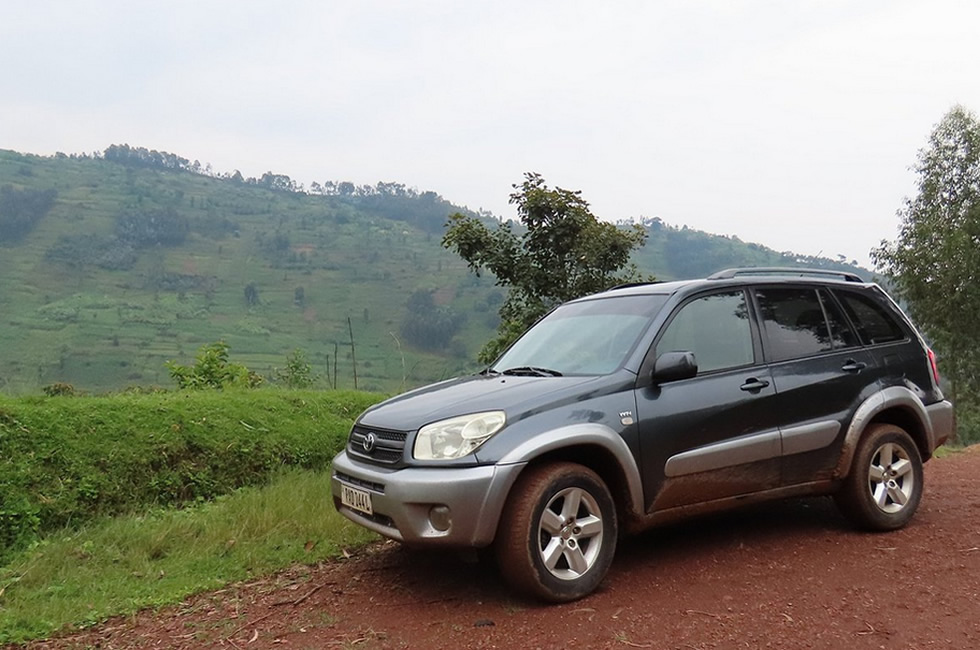
Why You Should Hire a Car in Rwanda?
Rwanda, known as the “Land of a Thousand Hills,” is a breathtakingly beautiful country in East Africa that offers a unique and memorable travel experience. From its stunning landscapes and vibrant culture to its diverse wildlife and rich history, Rwanda has become a popular destination for adventurers and nature enthusiasts alike. One of the best ways to explore this remarkable country is by booking a rental car. Here are several reasons why renting a car in Rwanda is a great deal.
Freedom and Flexibility
When you rent a car in Rwanda, you gain the freedom and flexibility to explore the country at your own pace. You are not bound by the restrictions of public transportation schedules or dependent on tour groups. With a rental car, you can create your own itinerary, choose your destinations, and take detours whenever you please. Whether you want to spend a day exploring the vibrant capital city of Kigali, go on a thrilling wildlife safari in Akagera National Park, or visit the awe-inspiring Volcanoes National Park, having a rental car gives you the freedom to make the most of your time and experience Rwanda on your terms.
Scenic Drives
Rwanda is renowned for its breathtaking scenery, and driving through the country allows you to immerse yourself in its natural beauty. From rolling hills and lush tea plantations to picturesque lakes and dense rain forests, the landscapes of Rwanda are truly mesmerizing. Booking a rental car enables you to embark on scenic drives, such as the renowned Lake Kivu loop, where you can witness stunning views of the lake and its surrounding hills. The drive from Kigali to Volcanoes National Park is also a must-do, offering captivating vistas of the countryside and the opportunity to see the majestic mountain gorillas.
Accessibility to Remote Areas
While Rwanda has a well-maintained road network, some remote areas may be challenging to access without a private vehicle. Renting a car provides you with the ability to reach off-the-beaten-path destinations and explore lesser-known gems. For instance, you can venture to Nyungwe Forest National Park, home to a remarkable diversity of primates and one of the oldest rain forests in Africa. Having a rental car enables you to navigate the country’s roads and reach these remote areas, granting you the chance to discover hidden treasures and create unforgettable memories.
Cost-Effective Travel
Contrary to popular belief, booking a rental car in Rwanda can be an affordable option for travelers. The country offers a range of car rental companies with various vehicle options, allowing you to find one that suits your budget. Additionally, by having a car at your disposal, you can save money on transportation costs in the long run. With public transportation, you might need to hire taxis or join organized tours, which can add up over time. By renting a car, you can optimize your travel budget and allocate your funds towards other experiences or accommodations.
Enhanced Safety and Convenience
Rwanda is a safe and welcoming destination for tourists, and renting a car adds an extra layer of safety and convenience to your journey. With your own vehicle, you have control over your transportation, ensuring a secure and comfortable travel experience. You can store your belongings safely, avoid crowded public transport, and have the convenience of traveling directly from one attraction to another without the hassle of coordinating with multiple transportation modes.
In conclusion, booking a rental car in Rwanda is undeniably a great deal for travelers. The freedom, flexibility, and accessibility it offers allow you to maximize your time, immerse yourself in the country’s stunning landscapes, and explore hidden treasures. Moreover, renting a car can be cost-effective, providing you with the opportunity to allocate your travel budget.
Read More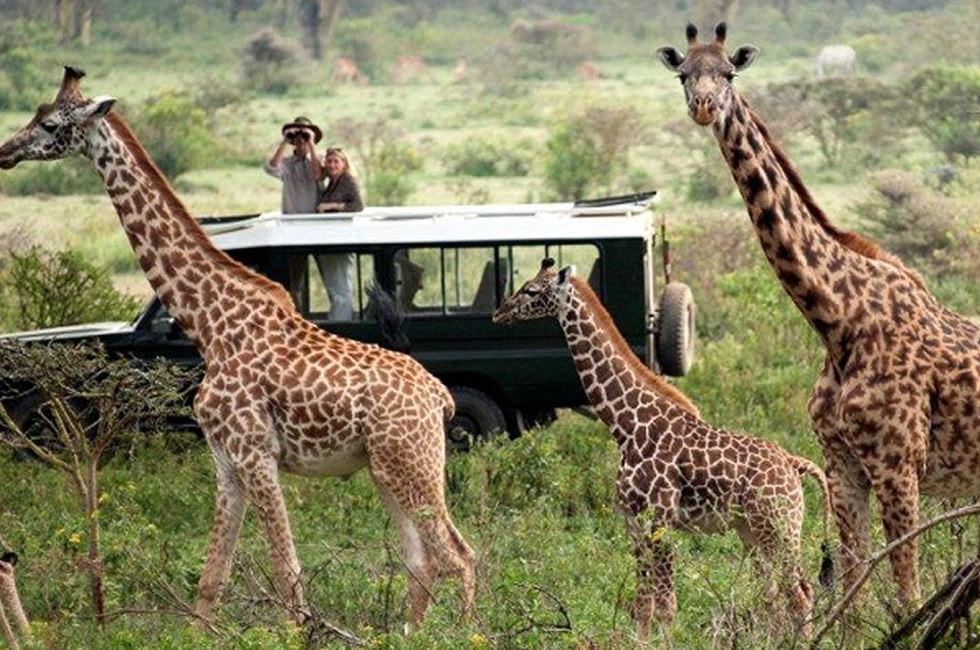
Going on Safari in Rwanda
Rwanda is renowned for its amazing gorilla trekking holidays in Volcanoes National Park. Trekking through the dense rain forest of Rwanda in search of mountain gorilla families is one of the most profound experiences that you can enjoy in the natural world.
Situated in the far northwest of Rwanda, Volcanoes National Park protects the steep slopes of this magnificent mountain range – home of the endangered mountain gorilla and a rich mosaic of montane ecosystems, which embrace evergreen and bamboo forest, open grassland, swamp and heath.
Tracking endangered mountain gorillas through the mysterious intimacy of the rain forest, alive with the calls of 200 species of colorful birds and chattering of the rare golden monkey, is only one of the truly unique experiences in the area.
The cost of a single gorilla permit in Rwanda is US$1,500 for visitors from outside Africa. Also, there is a discounted gorilla permit from November to May and it always applies when you are visiting one or two more Rwanda parks. Again, for the citizens of Rwanda and other East African countries have an offer of $200. The best time to visit Rwanda is during the dry season of June to October. This is also the best time of year to see mountain gorillas in Rwanda as these periods offer the best hiking conditions and the lowest risk of malaria.
Volcanoes National Park is the site of primatologist Dian Fossey’s Karisoke Research Station, where she led a team to study gorillas in the wild. You can undertake about a 2-hour hike to her tomb, which is – like so much in Rwanda – both moving and inspiring, or discover more about the Dian Fossey Gorilla Fund.
The hike is considered one of the best, most intimate tours in Rwanda, and offers a great opportunity to look out for primates, hogs, forest elephants and a plethora of bird species. There are a few troops of habituated golden monkeys, whose antics are great fun to watch. Golden monkeys are endangered, and permits are required for trekking.
Volcanoes National Park also shelters five of the eight volcanoes of the Virunga Mountains which are: Mount Karisimbi, Mount Bisoke, Mount Muhabura, Mount Gahinga and Mount Sabyinyo) covering over 160 km2 of rain forest and bamboo.
During gorilla trekking you will embark on your hikes to the different Virunga Mountains depending on the different gorilla groups that are assigned to you, for instance, the Karisimbi gorilla group is found on mount Karisimbi, the Ugenda gorilla family is usually found along the slopes of mount Sabyinyo among other gorilla families.
The gorilla trekking process in the park is quite interesting because you will get to see a number of attractions including the different bird species, the golden monkeys among other species. In the park, you will get to the bamboo trees where the gorillas are found, you will get to see the behaviour of the gentle giants while in the wild, for instance, their feeding patterns you will see infants suckling the breasts of their mothers for food, you will also see them eating the bamboo trees which is quite an exhilarating experience to come in contact with the primates which you will see in an hour you get to spend with the gorillas, photography can also be carried out to keep exciting memories of your experience with the gentle giants.
Read More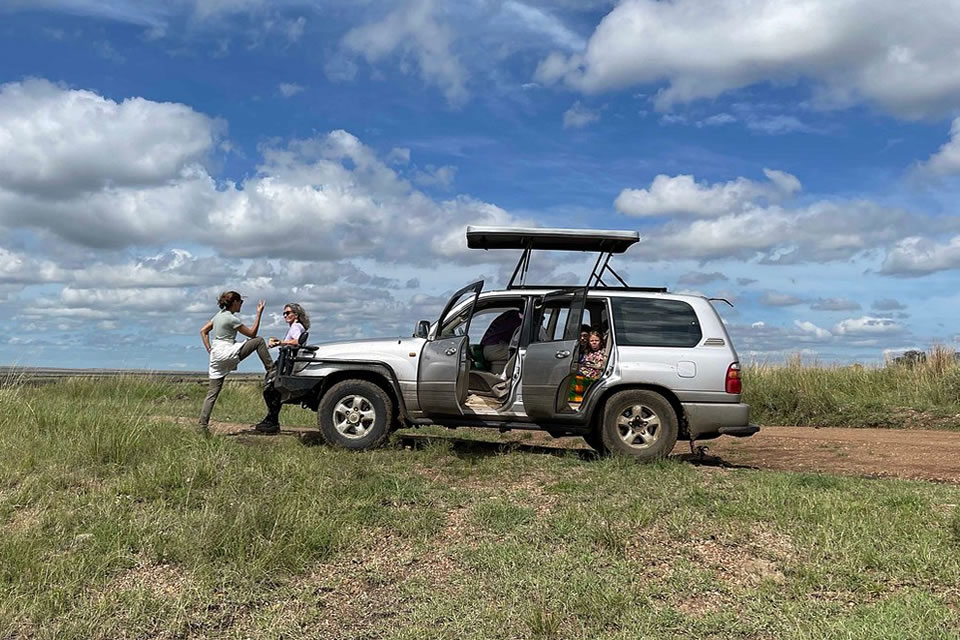
Uganda Self Drive Safari: Why Book Your Car Early?
Are you interested in self drive safari in Uganda? Self dive trips are by far the most sought after experience by travelers. Booking for a car of your choice is the most important thing that any traveler must do if you are to get the perfect safari experiences in Uganda. We appreciate the availability of internet, booking flights or contacting a tour company is no longer a debatable issue, it only takes you less time to reach to us for any help related to car hire/rental and self drive safaris in Uganda. Why is it important for you to book for your car in advance in Uganda?
Below are reasons;
You will have adequate time to plan for the journey
Booking a tour in advance offers traveler a lot of time to finish all their planning process. Adequate planning of your safari is very vital. It gives tourists ample time to do their shopping for clothes and travel accessories that may be of value for the safari. Make sure that you have your checklist by your side so that you do not leave out anything valuable. You can as well visit in any of Uganda’s local library or book store and spend some money in guidebooks. You can sit down with your family members and start selecting the activities that can excite you while in a safari in Uganda. Booking a car in advance also offers travelers adequate time to organize essentials like getting passports renewed and other vital vaccinations for the safari.
Wide range of choice
There are very many car rental companies in Uganda and by booking for your car in advance the best way for you to weigh different offers from various companies so that you up with the best choice. Equally, the perfect low budget lodges in Uganda usually get booked up during the peak season. Booking in advance means visitors have a lot of time to choose best pocket friendly safari accommodation to spend a night. The most magnificent places in Uganda include Murchison Falls National Park, Queen Elizabeth National Park and Bwindi Forest National Park. These destinations are highly booked during the peak season. You can book for your safari holiday in advance at least few months before traveling.
There are various drivers who are ready at the airport to offer you transport services but the unfortunate bit of it is that, the prices are just crazy with other hidden and inflated costs on your safari for instance parking fees, over time among others. These additional costs in most cases are not too much but will make you inconvenienced and definitely sad especially when your safari becomes expensive more than what you expected. You can only run away from this kind scenarios by simply booking a self drive car in advance or even book it with one driver and have the most fascinating travel experience with us.
It also breaks the assumption that drivers usually have that when you get out of the airport the next thing is to connect to the major city immediately. Since there is no public transport in the airport, at the same time you don’t have any one whom you are waiting for with car, the only alternative is for you to book for your self drive car in advance and it will right there as soon as you step at the airport.
In case you are planning to travel to Uganda it is advisable that you book your car at least 6 months in advance such that when you arrive at the airport, you are in position to find a driver waiting for you. Booking a car rental in Uganda is simpler now with online services and once you arrive at the airport, you get someone holding a paper with your name highlighted, after you will be taken where your booked car is to sign the agreement and you will set off with your car. By so doing you would have saved both money and time.
In conclusion we encourage you to book for your car in advance so that we confirm your booking before you arrive to Entebbe International Airport. This will also assist you on how you can connect from the airport to Kampala and other destinations that might be of interest to you.
Read More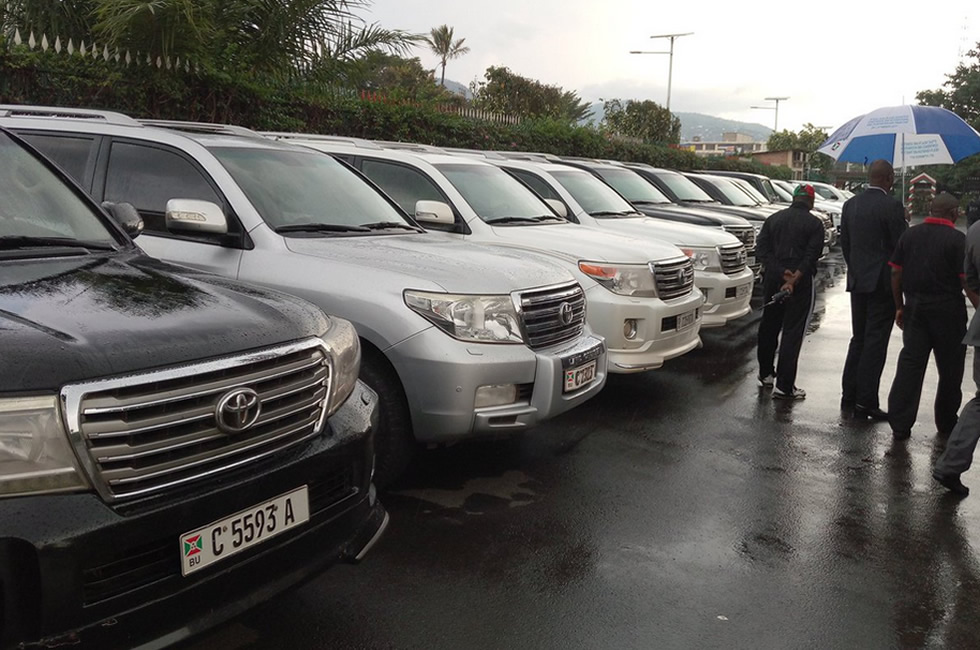
Travelers Guide to Renting a Car in Burundi
Getting around a new place is faster in a rental car than in public transport. You won’t have to carry your luggage around or queue in long lines waiting for public transport. The rental car will also help you save money if it has more safety features, more space, and better gas mileage than your car.
Navigating the car rental market can be pretty tricky for first-timers due to the numerous options available. However, not all of these vehicles for hire can meet your travel needs. Here’s how to rent a car in Burundi for memorable travel or out-of-town experiences:
Choose Features You Need in a Rental Car
You may need features like car seats for your kids or a GPS in the rental vehicle. Some rental companies charge additional fees to have these features installed in the car. Furthermore, the car model and size will determine the number and type of accessories you can install. Carry these accessories with you when renting a car if you already have them to cut rental costs. You should also avoid attaching accessories that you don’t need for your travel experiences.
Figure out the type of rental car that will be ideal for your travel and the number of passengers. Choose a vehicle for hire that can accommodate these needs for a comfortable ride.
Compare Car Rental Prices Online
Check popular travel sites for car rental prices and compare their rates to find a good deal. Narrow the options depending on the town you’re exploring, and the time you’ll need the vehicle. Ask about or look into the additional fees charged by a car for hire company. Compare these fees with the features or perks the company is offering drivers. Some providers charge underage driver fees for drivers below the age of 25.
If you are picking the vehicle from the airport, expect to pay airport surcharges. You may be charged additional fees for exceeding your daily mileage limit and having several drivers using the car.
Book in Advance
Most car rental companies have limited vehicles during peak travel seasons like the summer. Consider prepaying for a rental car for the provider to estimate the fees and prepare the vehicle in advance. Book three to six months before traveling since rental prices are usually competitive during peak travel seasons.
Though renting a vehicle from the airport may be convenient, it’s pretty costly due to the airport surcharges. Take your time to explore the car rental companies in your travel destination that allow reservations. Check whether the agency charges cancellation fees and their terms and conditions for the same.
Check Membership or Reward Programs for Discounts
One of the perks you may get from a membership program is discounted car rental fees. Check whether your membership program has partnered with travel organizations for these discounts. You can find these discounts listed on the program’s website.
You should also subscribe to services or memberships that can save your car rental costs. Some airlines give free coupons to loyal customers that they can use to hire a car.
Enroll in loyalty programs rolled out by a car rental service to earn points every time you hire a car and redeem them for future rides. They may favor your case if you tend to rent a car several times a year.
Take advantage of special offers
You should always take advantage of special deals, because companies that want to rent all their vehicles offer them to customers at the best prices. After all, their goal is for you to rent their car and to drive a car that suits you at the best price, they simply want you to travel.
Bring Your Identifying Documents with You
The car rental firm will ask you to carry your personal identifying documents to process your request. Note that rental agencies have policies that differ from other agencies regarding the documents you should carry for approval. Email or call the company and ask them about the required documents.
A valid driver’s license is one of the important documents you need to rent a vehicle. The license will help prove that you are a legal driver. Depending on your driving experience, this document will also prove that you can return the car in excellent condition.
The car rental company may ask you for an active credit card matching the name on your license. They may not accept debit cards when processing your request. The company will put your card on hold as insurance if you return the vehicle in bad shape or fail to return it.
Consider the Insurance Costs
Though most credit card companies and auto insurers cover rental cars, you may buy additional coverage. Learn about the rental car insurance policy given by your auto insurer before taking one. You should also expect to incur daily charges on other forms of insurance (like collision insurance) when using the rental car.
Check whether your credit card provider offers insurance on cars for hire. You may get a separate cover for the rental vehicle to avoid paying more on your auto insurance coverage if you get into an accident.
Inspect the Car Before Driving it
The rental car company will allow you to inspect the vehicle for cosmetic flaws before using it. Carry your camera with you to record any existing scratches or dents on the car. The photos may help you prove that the vehicle already had flaws when you rented it if they have a time and date stamp.
Inspect the mirrors and windows and look for loose parts and scuffs before driving away. You may also bring a third-party inspector to help with this work if you’re renting the vehicle for several days.
Conclusion
Your travel experiences are as good as the modes of transport you use to enjoy the scenery. Renting a car may be an ideal option if you’re visiting a new place or your car can’t handle the terrain in the travel destination. Consider the car rental service tips on how to rent a car to make your trip worthwhile.
Read More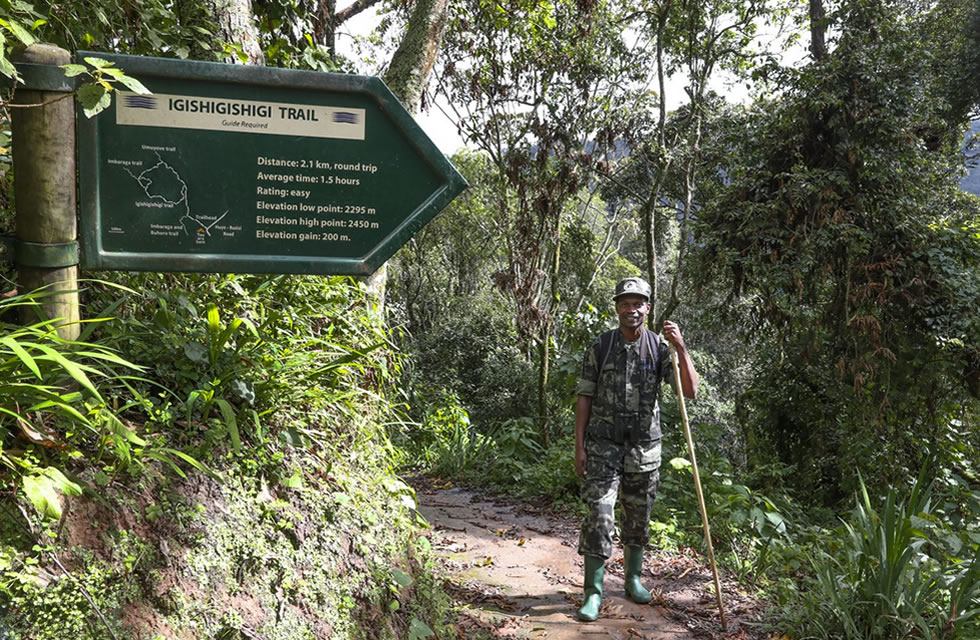
Best Of Rwanda Hikes and Trekking Destinations
Boasting of its breathtaking landscapes, conducive climatic conditions and abundant wildlife, Rwanda is indeed a must-visit destination. There are many hiking opportunities to explore on Rwanda safari in various national parks that include Nyungwe Forest National Park, Volcanoes National Park and along the edges of Lake Kivu. Rwanda is also strategically positioned in the Virunga Region, featuring five of the eight Chain Mountains –Gahinga, Muhabura, Sabyinyo, Karisimbi and Bisoke. The highest peak or Virunga volcano in Rwanda rises up to 4507 meters.
The best of Rwanda hikes and treks destinations
Volcanoes National Park for treks & hikes
Volcanoes National Park is most popular not only for tracking mountain gorillas but also for exhilarating hiking experiences. This park was founded in 1925, spanning on the land area only 160 sq.km, & features the most breathtaking sceneries.
Mount Bisoke
If you are looking for the shortest hikes/treks on Volcanoes National Park safari, then consider hiking Bisoke Volcano a must-do on Rwanda tour. The Bisoke hiking trail ushers hikers to Lake Ngezi, a scenic Crater Lake lying on Mount Bisoke’s depression. This is typical of scenic trek, taking about 3 hours to get to 3700 meters.
Mt. Karisimbi
Mt. Karisimbi rises at 4507 meters and it is the tallest of the 8 Virunga Massifs. The snow-capped cloud Karisimbi requires 2 days to hike to & back from the summits of Karisimbi Volcano.
Mt. Kabuye
Rising at 2700 meters, Mt. Kabuye is one of the single-standing mountains in the Land of a Thousand Hills. Trekking to the summits of this mountain doesn’t require you to have a permit. The treks can be done at free cost and even those with fitness challenges can hike it. It is located near Volcanoes National Park in Ruhengeri, Northwestern Rwanda.
Mount Muhabura
Mt. Muhabura offers remarkable hikes for whole day to get to 4127 meters. This volcano rewards trekkers with incredibly scenic treks with opportunity for you to overview the Twin Lakes – Lake Burera and Ruhondo.
Buhanga Sacred Forest
The Buhanga Sacred Forest is a rich forest with unique Rwandan cultures and traditions. Much respect is accorded to Buhanga recognizing it as a place for creation, it being the location where all the Kings of Rwanda were crowned in the past. The existing hiking trails in Buhanga lead you through the volcanic rock-paved paths, massive trunks, ancient ficus trees and more.
Hike the Congo Nile trail
The most popular trekking or hiking trails in Rwanda is the Congo Nile trail. This is superb extensive trail stretching for 227 km and takes hikers at least ten days to have a complete trek. The trail leads hikers via the rural setting, as you explore the remotest communities while they conduct their daily activities.
Karisoke Research Center
The Karisoke Research Center is set between Mt. Bisoke & Karisimbi Volcano. This is the main location where Dian Fossey pioneered her journey to conserve gorillas. It was established in 1967 mainly to assist with her research activities.
Nyungwe Forest National Park trekking trails
Igishigishigi trail
This is where visitors can begin their journey to explore the canopy walkway. The trail is 2.1 km and canopy walkway can last hikers 2-3 hours. Other trails include Umoyove trails, Karamba trail, Kamiranzovu trail, Isumo trail, Rukuzi trail, and Rukuzi trail.
Read More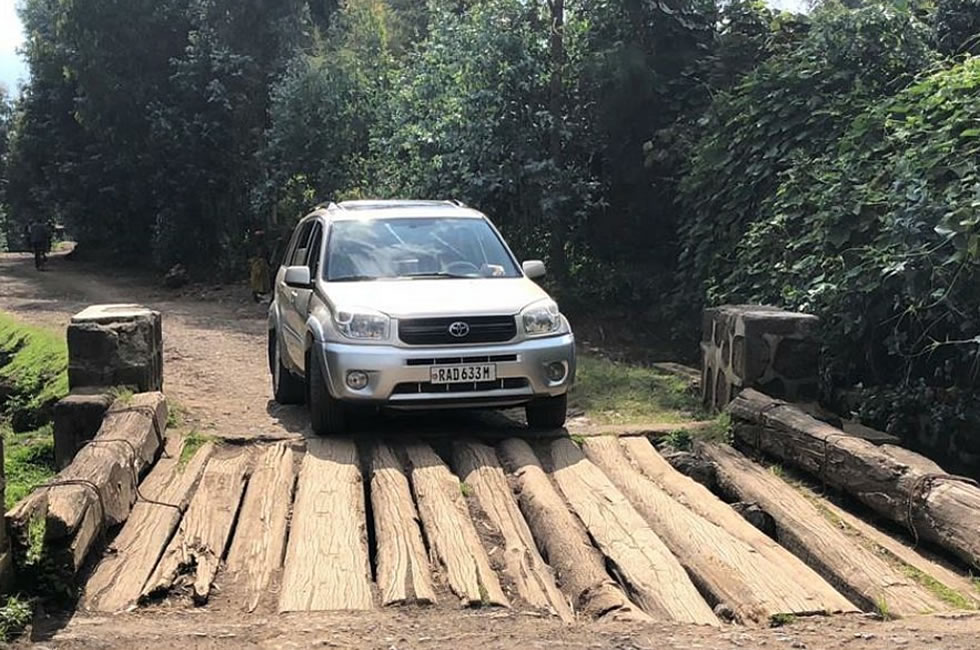
A Complete Guide to Self Drive Tours in Rwanda
Plan the road trip to Rwanda with Drive East Africa to cut the cost of the Rwanda Safari while on an adventure and enjoy various Safari activities in Rwanda National Parks.
We have put together this comprehensive guide to assist independent tourists wanting to travel to Rwanda on a self-drive safari to understand the best places to go, where to stay, the people of Rwanda, and many considerations for the perfect road trip journey.
History of Rwanda
Rwanda, often known as the “country of a thousand hills,” because of its vast, sprawling, lush mountains and diversified natural beauty.
The variety and uniqueness of what may be seen in Rwanda will astound the nature enthusiast, but the country is home to more than just Albertine endemics and protected mountain gorillas. The beaches along Lake Kivu’s shoreline rank among the greatest in Africa’s interior and provide access to the lake’s numerous small islands.
The capital and primary conference center of east Africa, Kigali, serves as a vital stepping stone to several locations both inside the nation and throughout central and east Africa. The city produces excellent locally grown tea and coffee and is green, lively, and safe.
Even though the 1994 Genocide, which resulted in the mass death of up to 20% of the country’s people, is all too frequently linked with Rwanda, the nation is moving toward cultural rehabilitation and investment in the future. There is something to enjoy in Rwanda for everyone. Here are just a few of Rwanda’s many attractions.
- Visit the golden monkeys, chimpanzees, and colobus monkeys of Rwanda in Nyungwe National Park, Akagera National Park, and volcanoes National Park.
- Visit the national park for volcanoes to search for the legendary mountain gorillas.
- Join a birding safari tour to see the variety of birdlife in Rwanda, as well as the Nyabalongo wetlands, Akagera National Park,
- Discover the breathtaking waterfalls, flowers, and butterflies at Nyungwe National Park.
- Nyungwe Forest National Park, and Cyamundongo Forest, which are among of Rwanda’s IBAs (important birding areas).
- Visit one of Rwanda’s 52 mapped caverns. made from volcanic rock from the Cenozoic.
- On Lake Kivu, go windsurfing, kayaking, and canoeing.
- Visit Lake Kivu, the largest lake in Rwanda, with its numerous islands as well as the beach resort cities of Rubavu and Karongi.
- Iby’Iwacu Cultural Village in Musanze, Rwanda’s Northern Province, offers a whole traditional Rwandan experience, complete with dancing, traditional crafts, archery, traditional healers, food, and a taste of the local brew.
- Visit the volcanoes national park, where you shouldn’t miss the fifth-highest mountain in Africa and go mountain biking across Rwanda’s 1,000 hills.
- Visit one of the many regional markets or cooperatives located all around Rwanda to purchase Rwandan crafts.
- Around 60 kilometers from Kigali, Lake Muhazi offers calm days and delicious fish dishes.
- Learn everything there is to know about Rwanda’s capital city as you travel around Kigali on the Kigali city tour bus.
- Visit Kigali, Murambi, Nyanza, Kicukiro, and Ntarama memorial sites to pay your respects to the victims of the genocide in Rwanda.
- At the king’s palace in Nyanza, go back in time.
Rwanda mountain gorilla:
Mountain Gorilla Trekking in Volcanoes National Park on Self drive ? We help you secure the Gorilla permit at no extra cost.
Volcanoes National Park: The volcanoes national park, which is located to the north, guards the region of the Virunga Mountains that is in Rwanda. The Virunga Mountains are a trans-frontier conservation area that also includes protected areas in Uganda and the Democratic Republic of the Congo and is made up of a complex of mostly dormant volcanoes. The two active volcanoes in Congo, Mount Nyiragongo and Mount Nyamulagira, which may be visited on a Congo Safari organized by either a Congo Tour operator or directly with the park offices, are also included in this list, as well as Mount Karisimbi (4507), the highest point in Rwanda.
This National Park is renowned for housing the last remaining mountain gorillas in their native habitat in addition to housing nearly 100 different bird species. Although mountain gorillas are the main reason people flock to the park, there are also a number of other tourist attractions and opportunities there. There is a possibility to go to the top of Karisimbi Mountain, the fifth-highest mountain in Africa, or even to the stunning Crater Lake on Mount Visoke.
The neighboring Rugezi wetland and the twin lakes Burera and Ruhondo, which are frequently disregarded, are known for their superb water birding chances. There are several community-based tourism activities available in the region, such as visiting villages, agricultural production facilities, and an ethnobotany tour, going fishing with local fishermen using traditional techniques, or just relaxing and admiring the gorgeous surroundings.
Nyungwe National Park:
Nyungwe National Park is the largest and oldest remaining mountain rain forest patches in the area.
it’s located deep in the southwest within the Albertine Rift Area. The park is also home to a multitude of eco-systems including rainforest, bamboo, grassland, swamps, and bog habitats. It is home to 310 species of birds and one of the largest and last remaining sections of highland rainforest in the area. The most significant ornithological location in Rwanda is this park. It is becoming more and more popular due to the fantastic birding chances, especially the numerous Albertine Rift endemics, which are present in greater numbers here than in any other African park. There are about 240 different species of trees, over 140 different colors of orchids, and over 1050 different kinds of plants, including the enormous Lobelia. 250 of these plants are endemic to the Albertine Rift. The most distant sources of the Nile are found in Mount Bigugu, the park’s tallest mountain, which rises to a height of 2950 meters.
The park is home to 13 different species of primates, including habituated chimpanzees, a number of mammals, and a wide range of other species, including hundreds of butterflies, a relatively small number of snake species (due to the altitude), as well as a number of vibrant lizard and chameleon species. There is a lot to see and do on the many breathtaking walks that the park has to offer. Learn More
Akagera National Park
Would you like to go on self-drive in Rwanda‘s Akagera National Park? Embark on self-guided game drives in the Akagera National Park while renting a car with Drive East Africa.
It is rapidly becoming recognized as Rwanda’s Big 5 wildlife park. Including the Kagera River and being on Rwanda’s northeastern border with Tanzania, hence the name Akagera. The national park was established in 1934 to safeguard the fauna and flora of the savannah, mountain, and swamp environments. Akagera, which focuses on big game, now has an African elephant, buffalo, zebra giraffe, and a few antelope species. Numerous hippopotamuses and the Nile crocodile, the largest reptile in the world, can be found in Akagera and adjacent lakes.
It is regarded as one of Rwanda’s top locations for bird watching. Many different bird species are drawn to the park’s diverse settings. Without a doubt, Akagera is the best location in Rwanda to see savannah birds and raptors. It is also one of the few areas where the less common species dwelling in the papyrus swamps may be seen. It is also quite well stocked with water birds. There are no breeding bird species in Rwanda that cannot be seen in either of the Akagera or Nyungwe national parks due to their complementarity in terms of bird life.
Rwanda culture
With a wide variety of superb crafts and enduring traditions, Rwanda has a rich culture. Local markets, craft shops, and craft cooperatives offer wonderful shopping choices, not just in and around Kigali but all across the nation. Watch out for the internationally renowned traditional Akagera baskets from Rwanda, as well as the pottery and hand-painted imigongo artwork.
Initiatives for cultural tourism are being developed all throughout the nation and are high on the agenda; they encourage community-based tourism and provide you the chance to help a community while experiencing the culture and the country. Some of these include excursions to local towns where tea, coffee, and sorghum (beer) are produced, fishing and boating initiatives, tours with traditional herbalists, and trips to nearby villages where one can learn to prepare regional cuisine. Even a reconciliation village worth visiting allows visitors to hear the survivors’ and collaborators’ tales of the massacre.
Travelers are drawn to the Intore dance, also known as the Rwandan Ballet, because of its rising notoriety. In celebration, beautifully dressed Intore dancers move rhythmically from side to side while holding spears in their hands. Visit the national museum in Huye to witness these dancers and the continent’s largest collection of ethnographic artifacts.
In memory
Memorials and museums
Over the course of around 100 days, the Rwandan Tutsi Genocide of 1994, which was orchestrated by despicable authorities of the time, resulted in the mass murder of over a million of the country’s sons and daughters. Today, Rwandans are profoundly devoted to fighting the concept of genocide in all of its expressions, eradicating ethnic, regional, and other forms of discrimination, and embracing peace and reconciliation.
Western province’s Karongi
This is an environment Museum in Kibuye, next to Lake Kivu. This museum features transient exhibits about environmental changes in Rwanda and other countries.
Nyaza and Huye
Museums and other historically significant locations can be found in Huye, the former colonial capital of Rwanda. The Ethnographic Museum, one of the six museums that make up the Institute of National Museums of Rwanda (INMR), the Memorial at Murambi, the largest Roman Catholic Cathedral constructed in the 1930s, the Ruhande Arboretum, and more are all popular tourist attractions in the city.
The Ethnographic Museum was established in 1989 and has one of Africa’s greatest ethnographic collections on display in its seven rooms. These exhibits feature historical, pre-colonial, colonial, artistic, and archaeological artifacts, providing visitors with a deep understanding of Rwandan culture.
The Nyanza Genocide Memorial honors the victims of the murders that occurred at the Ecole Technique Officielle. The Murambi Memorial Center, also known as the Murambi Genocide Memorial Center, is situated in an old secondary school close to the town of Gikongoro in the South-West region of Rwanda. The Institute of National Museums of Rwanda (INMR) in Huye is 30 minutes away by car from the Murambi Memorial Center.
Near Kigali City
The massacre of 10 Belgian UN Blue Berets on the first day of the 1994 genocide is remembered at Camp Kigali. The camp is home to a tiny museum and a memorial with a stone pillar for each soldier and a line denoting their age.
Richard Kandt, a German physician and adventurer who traveled to Rwanda in 1897 in search of the Nile’s source, is honored at the national history museum. The interdependence of living things and their environment is explained in the exhibit. His creations and several national natural treasures are on display in this museum.
Some of Rwanda’s most heinous atrocities took place on the sites of the Nyamata and Ntarama Genocide Memorials. Both are situated in the Bugesera region, some 30 kilometers south of Kigali. These churches and their belongings serve as a reminder of the atrocities committed during the 1994 genocide in Rwanda.
The Kigali Genocide Memorial Center, a collaborative venture of the Kigali City Council and the Aegis trust, was opened in April 2004 to commemorate the 10th anniversary of the start of the Genocide in Rwanda. There are three ongoing exhibits, the largest of which details the 1994 Rwandan genocide. A memorial for children and an exhibition on the global history of genocide brutality are both present. Over 250.000 persons are buried on the site where the center is located.
Juvenal Habyarimana, the former president of Rwanda, lived in the Presidential Palace Museum, which is 40 kilometers (about 24.85 mi) from Kanombe Airport. This museum is well renowned for the fight debris, which are the remains of the presidential plane that crashed on April 6, 1994.
Another place related to the genocide in Rwanda is the Remera Heroes’ Cemetery. This cemetery is located on Kimironko Road, past the Amahoro stadium, and contains three particularly notable graves: the Tomb of the Unknown Soldier, which serves as a memorial to all genocide victims, and the grave of Fred Rwigema, the co-founder and leader of the RPF, who was killed on 2 October 1990 while attempting to invade Rwanda.
The Nyanza Genocide Memorial honors the 10,000 Rwandans who were murdered at the Ecole Technique Officielle. The exhibit stresses the world community’s abandonment while also documenting the tragedy.
Agaseke (the peace basket)
Giving someone a peace basket is a customary gesture of love and respect in Rwanda. Treasures like jewelry and food items like grains and cereals are kept in peace baskets. When girls get married, they often bring at least six peace baskets, which are laden with gifts and food, to the husband’s house.
Following the genocide in Rwanda, many uneducated women found it challenging to find employment and were heavily reliant on the income of their husbands. Until women began to produce peace baskets, which were marketed via various associations and co-ops and allowed them to make a career while improving the welfare of their households, the fueled domestic disputes. The fact that Hutu, Tutsi, and Twa women sit side by side to weave these “peace baskets” is a consoling feature of the baskets.
In the province of Eastern
The Nyarubuye Genocide Memorial, which commemorates the violence that occurred on April 14 and 15 and resulted in the deaths of over 20,000 people, is situated in the Kirehe District, 35 kilometers from Kibungo. Remains of the victims, including clothing, crockery, and human bones, are still preserved at this location in the nunnery structures.
All around the country, memorials and testimonials have been built as a tribute to the 1994 Tutsi Genocide, its brutality, and the friends and family who perished.
Plan to go on a Rwanda safari to take advantage of visiting and viewing the aforementioned locations. One of the trustworthy vehicle rental companies and travel agencies that can provide you with the greatest safaris to Rwanda is Drive East Africa.
Read More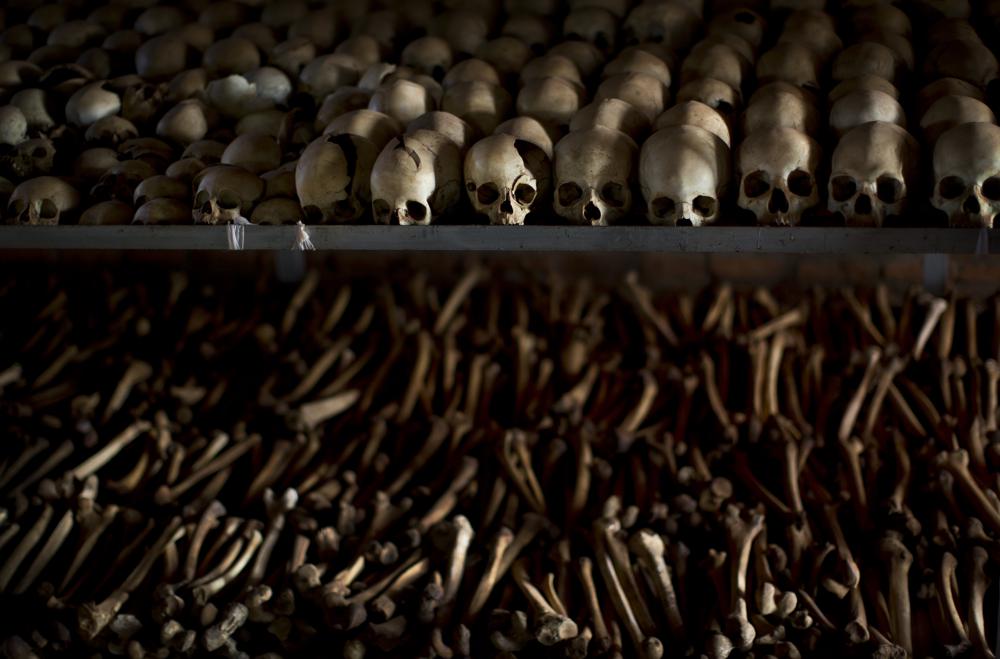
Dark Tourism Attracts Tourists to Rwanda
Dark tourism refers to visiting places where some of the darkest events of human history have unfolded. That can include genocide, assassination, incarceration, ethnic cleansing, war or disaster either natural or accidental. Some might associate the idea with ghost stories and scares, but those who study the practice say it’s unrelated to fear or supernatural elements. To many visitors who plan safaris in Rwanda, genocide memorial sites are among the attractions that do not miss in tour itineraries;
RWANDA GENOCIDE BEGINS
On April 6, 1994, a plane carrying Habyarimana and Burundi’s president Cyprien Ntaryamira was shot down over the capital city of Kigali, leaving no survivors. (It has never been conclusively determined who the culprits were. Some have blamed Hutu extremists, while others blamed leaders of the RPF.)
Within an hour of the plane crash, the Presidential Guard, together with members of the Rwandan armed forces (FAR) and Hutu militia groups known as the Interahamwe (“Those Who Attack Together”) and Impuzamugambi (“Those Who Have the Same Goal”), set up roadblocks and barricades and began slaughtering Tutsis and moderate Hutus with impunity.
Among the first victims of the genocide were the moderate Hutu Prime Minister Agathe Uwilingiyimana and 10 Belgian peacekeepers, killed on April 7. This violence created a political vacuum, into which an interim government of extremist Hutu Power leaders from the military high command stepped on April 9. The killing of the Belgium peacekeepers, meanwhile, provoked the withdrawal of Belgium troops. And the U.N. directed that peacekeepers only defend themselves thereafter.
SLAUGHTER SPREADS ACROSS RWANDA
The mass killings in Kigali quickly spread from that city to the rest of Rwanda. In the first two weeks, local administrators in central and southern Rwanda, where most Tutsi lived, resisted the genocide. After April 18, national officials removed the resisters and killed several of them. Other opponents then fell silent or actively led the killing. Officials rewarded killers with food, drink, drugs and money. Government-sponsored radio stations started calling on ordinary Rwandan civilians to murder their neighbors. Within three months, some 800,000 people had been slaughteredMeanwhile, the RPF resumed fighting, and civil war raged alongside the genocide. By early July, RPF forces had gained control over most of country, including Kigali.
In response, more than 2 million people, nearly all Hutus, fled Rwanda, crowding into refugee camps in the Congo (then called Zaire) and other neighboring countries.
After its victory, the RPF established a coalition government similar to that agreed upon at Arusha, with Pasteur Bizimungu, a Hutu, as president and Paul Kagame, a Tutsi, as vice president and defense minister.
Habyarimana’s NRMD party, which had played a key role in organizing the genocide, was outlawed, and a new constitution adopted in 2003 eliminated reference to ethnicity. The new constitution was followed by Kagame’s election to a 10-year term as Rwanda’s president and the country’s first-ever legislative elections.
RWANDAN ETHNIC TENSIONS
By the early 1990s, Rwanda, a small country with an overwhelmingly agricultural economy, had one of the highest population densities in Africa. About 85 percent of its population was Hutu; the rest were Tutsi, along with a small number of Twa, a Pygmy group who were the original inhabitants of Rwanda.
Part of German East Africa from 1897 to 1918, Rwanda became a Belgium trusteeship under a League of Nations mandate after World War I, along with neighboring Burundi.
Rwanda’s colonial period, during which the ruling Belgians favored the minority Tutsis over the Hutus, exacerbated the tendency of the few to oppress the many, creating a legacy of tension that exploded into violence even before Rwanda gained its independence.
A Hutu revolution in 1959 forced as many as 330,000 Tutsis to flee the country, making them an even smaller minority. By early 1961, victorious Hutus had forced Rwanda’s Tutsi monarch into exile and declared the country a republic. After a United Nations referendum that same year, Belgium officially granted independence to Rwanda in July 1962.
Ethnically motivated violence continued in the years following independence. In 1973, a military group installed Major General Juvenal Habyarimana, a moderate Hutu, in power.
The sole leader of Rwandan government for the next two decades, Habyarimana founded a new political party, the National Revolutionary Movement for Development (NRMD). He was elected president under a new constitution ratified in 1978 and reelected in 1983 and 1988, when he was the sole candidate.
In 1990, forces of the Rwandese Patriotic Front (RPF), consisting mostly of Tutsi refugees, invaded Rwanda from Uganda. Habyarimana accused Tutsi residents of being RPF accomplices and arrested hundreds of them. Between 1990 and 1993, government officials directed massacres of the Tutsi, killing hundreds. A ceasefire in these hostilities led to negotiations between the government and the RPF in 1992.
GENOCIDE MEMORIAL SITES
Some of the major memorials centers are highlighted below; you can request to visit any of them depending on their location and your itinerary.
Kigali Genocide Memorial Center
The Kigali genocide memorial center is located 10 minutes’ drive from the city center in Gisozi. It is the final resting place of 250,000 Rwandans killed in the genocide. It is run by AEGIS, a UK Non-Governmental Organisation committed to stop genocides from happening around the world. The center has different exhibit places with space of skulls of survivors and their personal belongings, photographs of survivors, reconciliation efforts, and genocide perpetrators. Another space has photographs and descriptions of genocides that have happened around the world showing that this indeed is not a Rwandan problem but a world problem that should never happen again. Outside the building, there is a garden and different mass graves where survivors and those who lost loved ones can come to‘re-connect’. This can be included on your itinerary while on the Kigali city tour because of its location near the city center.
Murambi Genocide Memorial
Murambi genocide memorial set on the grounds of former Murambi technical school near Murambi town is by far the most difficult memorial to visit because of the bodies and skeletons of genocide victims on display. One can almost recognize and identify a survivor if indeed they were a relative or friend. Tutsi were advised to hide in the technical school with pretext that French soldiers would protect them but alas, it was a trap. After gathering there, they had no food and were attacked by the militia. The site has several mass graves with former classrooms acting as exhibition rooms.
Nyamata Genocide Memorial
Nyamata genocide memorial center is a former church located 30 km south of Kigali in Bugesera. The center commemorates the 25,000 Rwanda genocide victims buried here. This is one of the more dark sites in Rwanda after Murambi genocide memorial.
It is unfortunate that many Tutsi people gathered here considering it a safe sanctuary because previously churches were seen as safe places. Little did they know that this building was a pure death trap as opposed to life? The Tutsi’s had locked themselves up in the church seeking safety but were shocked when Hutu militias forced open the doors open with hand grenades and reigned on them with machetes. You will find clothes and national ID cards of the dead victims on the church pews with blood spread all over the place. The alter cloth is still stained with blood from the massacre of the several victims. Outside the church are mass graves for your visits.
Nyanza Genocide Memorial
Nyanza genocide memorial located on the grounds of Kigali’s Ecole Technique Officielle in Kicukiro district – Kigali city . This often acts as the grounds for the genocide anniversary commemorations which happen yearly in April. It holds the graves of more than 10,000 genocide victims abandoned by the Belgian UN peacekeeping forces as the genocide intensified. The UN forces left these Tutsi’s in the hands of their massacres by not airlifting them to the safety they themselves were going, a sad story of bureaucracy.
Bisesero genocide memorial
Its located 60 km from Kibuye, Rwanda with 40,000 people said to have died here. This genocide memorial site is a story of resistance of the Tutsi’s against their attackers the Hutu’s in the hills of Bisesero where they used stones and sticks to counter the Hutu attack.
Ntarama genocide memorial
It is an hour’s drive from Kigali. It is a former catholic church where 5000 people were massacred. It is much smaller than the other church genocide memorial sites because it was a small village parish. Just like the others, the Tutsi’s came here for refuge assuming that it would be safe but were shocked by attacks from the Hutu militias, who in some place accessed the building by removing bricks one by one.
Nyarubuye genocide memorial
Site located 140 km from Kigali is Catholic Church where 2000 Rwandan were killed. It is said that Sylvestre Gacumbitsi the then mayor of the district was involved in distributing arms and encouraging Hutu’s to use rape and later maim and kill the Tutsi’s. Unlike Ntarama and Nyamata genocide memorial sites, Nyarubuye was restored into a church and is currently used by people in the area with the memorial center adjacent to the church.
Conclusion
Although the Rwanda genocide tour is considered as dark tourism, it has brought peace and joy in the hearts of natives and the tourists that visit the different sites because even after killings of different groups of people the genocide came to an end there has been harmonious living among different groups of people. Regardless of the tribe differences, acts of racism are now prohibited and today Rwandans refer themselves as one people.
Read More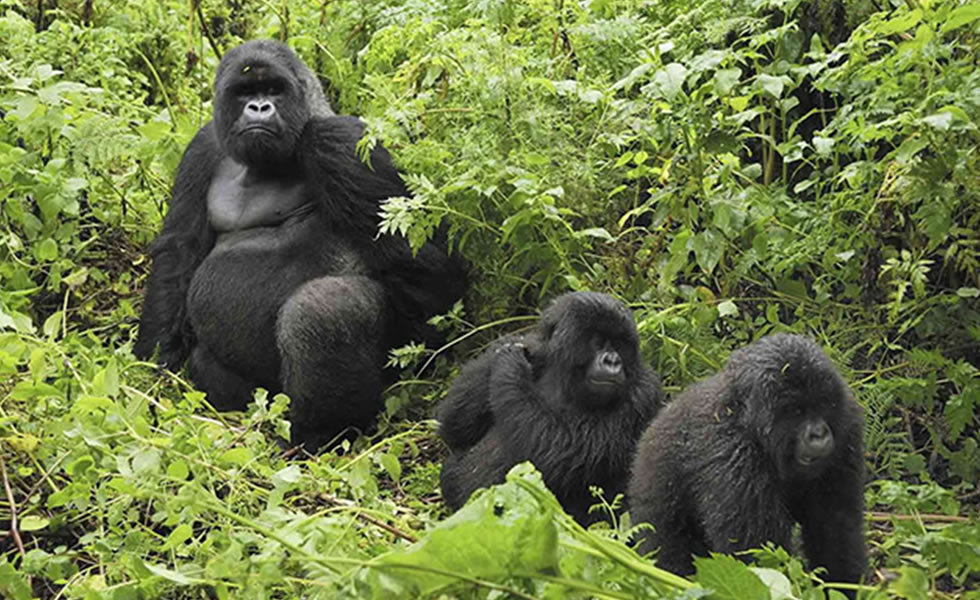
10 Amazing Animals to See in Uganda & Rwanda
One of the extra unique features that differ the East Africa from the rest of Africa is the Wildlife. Countries of Uganda and Rwanda have diverse, unique and more attractive wildlife. Therefore it is easy to understand why a plethora of Wildlife addicts check in per year. Varying from Wildlife, different bird species, reptiles to insect species, these countries with its numerous regions offers spectacular wildlife encounters of a lifetime.
Off all the regions, East Africa is an exceptional destination. Uganda and Rwanda are a must-see, below is the highlight about some of the wildlife and other species you should expect to see while on a wildlife safaris to any of these countries.
- African Bush Elephant; Elephants are of two types including African Savannah and Bush elephants. There are one of the biggest animals and are amongst the African Big fives. There are called so because they were difficult to hunt on foot. When compared, female elephants are smaller in size. A large male can stand up to 13 feet tall and weighs 11.5 tons. Elephants are herbivores in nature and mostly feed on Savannah grass and tree leaves. Today these animals are a must see for any wildlife lover. There are mostly found in Queen Elizabeth, Murchison Falls, Lake Mburo, Kidepo Valley National Park and Akagera National Park.
- Uganda Kob; Antelopes make up a good percentage of Uganda’s wildlife. Over twenty nine species are residents to the country including Uganda kobs, the country’s national antelope. Kobus kobthomasi (Uganda kob) is a subspecies of the kob. These animals are small in size. Males usually weigh up to 200 pounds and the size of females range between 130 -140 pounds.
- African Lion; Amongst the African Big fives, this is more preferred by Wildlife lovers. It is inclusive of Uganda’s animals and the most social of the big cats. Lions are omnivores, only feed on fresh and antelopes are their main feeds. Lions live in groups (prides) that include cubs, females and adult males. Cubs are usually born at the same time and it’s the lioness’s responsibility to take care of them along with hunting for some food. Males usually protect the prides from enemies. These animals are common in Queen Elizabeth, Murchison Falls and Kidepo Valley National Park.
- Cape buffalo; Cape buffaloes are a subspecies of the African buffalo. This is another member of the African big fives. Buffaloes are more dangerous and killed the highest numbers of the big game hunters. Both males and females have horns. There are herbivores; only feeds on grass and tree leave. A male buffalo can weigh up to one ton and its six feet when standing. These animals usually live in herds that consist of thousands of members.
- Black & White Rhinoceros; Rhinoceros are also among the African Big Fives. There are herbivores in nature and only feed on grass. They were typical residents in Uganda, but due to unfavorable conditions (constant civil wars, diseases, limited pastures and hunting), these animals phased out of the country. In 2005, the rhino fund in association with Uganda Wildlife Authority established Ziwa Rhino Sanctuary with the aim of reintroducing these animals back to Uganda. Rwanda’s Akagera is home to the species of Black Rhinoceros.
- Sitatungas; A sitatunga is a semi –aquatic antelope that mostly live in swamps. It usually swims with the help of its splayed feets. Male Sitatungas are larger than the females; they can weigh up to 275 pounds and 63 inches long. These antelopes are common in Lake Mburo and Queen Elizabeth National Park.
- Hippopotamus; Hippos are aquatic species and one of the animals that inhabit Uganda’s lush habitats. There are closely related to dolphins and whales. The reason why these species spend a lot of time in water is because they have no sweat glands. Hippos are large enough and rank the third largest terrestrial mammals after elephants and buffaloes. Though hippos are aquatic, they mostly feed on grass. If you after them, endeavor to be to partake a launch trip cruise along the Kazinga channel in Queen Elizabeth Park or Murchison Falls National Park.
- Rothschild’s giraffe; Also known as Uganda giraffe, Rothschild’s is the tallest among the varied subspecies of giraffes. It can stand up to 19 feet. There are herbivores and feed on tree leaves. These giraffes are endangered and few still enjoy Uganda’s lush habitats. While in Uganda, you can only find them in Murchison Falls National park and Kidepo Valley National Park.
Others;
Birds; If Wild animals do not appeal, Uganda is famous for Bird watching. This remarkable destinations are home to thousands of unique species including the rare shoebill stork.
Reptiles; Other than Wild animals and birds, Uganda and Rwanda are idyllic places to check out for variety of reptiles. Some of the common species are lizards, snakes, chameleon, turtles and crocodiles.
Wildlife can be found in National Parks, Game reserves and Sanctuaries as the main habitats for all the above mentioned Wildlife species.
In Uganda, wildlife can be best seen in several national parks that include Queen Elizabeth National Park, Murchison Falls National Park and Lake Mburo National Park, Interesting savanna animals can also be seen in the Kidepo National Park in the remote north eastern part of Uganda. Primates can be best seen in Kibale Forest National park, home to over 13 different primate species. Other places where you can see primates include Budongo game reserve and Kalinzu Forest Reserve can’t miss the list.
In Rwanda, savanna animals can be seen in Akagera National Park, a small savanna national park in the eastern part of the country.
While in Uganda or Rwanda, there is no better way to soak up the country’s diverse Wildlife than with a Game drive and game viewing. From a pop up roof of a suitable Safari landcruiser, views of Wild life, birds and the Wilderness are inspirational.
Read More